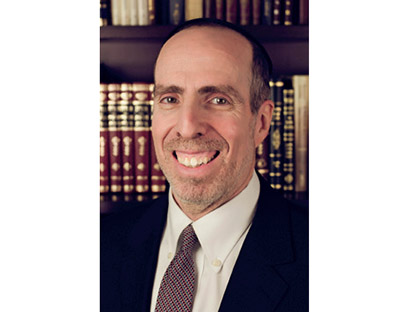
At a recent bar mitzvah celebration at a West Coast Sephardic congregation, a well-meaning and beloved visiting Ashkenazic rabbi began to lead the community in song, dance and clapping. This caused an awkward moment as Sephardic Jews refrain from clapping their hands to song on Shabbat and Yom Tov.
The Mishnah (Beitzah 36b) includes clapping and dancing on Shabbat and Yom Tov on a fairly long list of gezeirot, rabbinic decrees forbidding certain actions to prevent the violation of a Torah violation of these holy days. The Gemara explains that Chazal feared that if we were to clap our hands and dance to song on Shabbat we would come to play and eventually fix or tune a musical instrument.
A long list of Rishonim codify this ruling without exception. These authorities include the Rambam (Hilchot Shabbat 23:5) as well as the Rif, Rabbeinu Chananel, Rosh and Meiri to Beitzah 36b. Tosafot (Beitzah 30b) stand alone, however, saying that this gezeira no longer applies in their time when they were no longer proficient in tuning musical instruments.
Tosafot’s approach is no less than shocking. First, we remain, certainly in our times, capable of fixing and tuning musical instruments. Second, it is axiomatic that rabbinic decrees remain in effect even if the reason for their enactment no longer applies (Beitzah 5a; Davar she’b’minyan tzarich minyan acher l’hatiro).
Rav Yosef Karo, the primary Sephardic halachic authority, follows in the path of the majority of Rishonim in ruling that this decree remains in full effect in our times (Shulchan Aruch, Orach Chaim 339:3). The Rama, the major Ashkenazic codifer, though, presents Tosafot’s approach as normative. In fact, the Rama notes that the common practice of Ashkenazic communities is to follow the lenient approach of Tosafot.
Not surprisingly, Chacham Ovadia Yosef (Teshuvot Yabia Omer 3 Orach Chaim 22 and Teshuvot Yechave Da’at 2:57) vigorously endorses the ruling of the Shulchan Aruch. Moreover, he even goes as far as to convince Ashkenazic Jews to refrain from clapping and dancing to song on Shabbat and Yom Tov (it should be noted that even the Mishnah Berurah 339:10 is not enthusiastic about this Ashkenazic practice and prefers adopting a strict approach to this matter).
Nonetheless, as noted by the Aruch HaShulchan (Orach Chaim 339:9), the Ashkenazic custom to be lenient has persisted. This is likely due to the fact that it is a bit counterintuitive to forbid clapping on Shabbat and Yom Tov lest one come to fix a musical instrument. Although Aruch HaShulchan rejects Tosafot and Rama’s justification of this practice, he offers an interesting original defense. He argues that the gezeira was issued only to clapping and dancing to music that is being played. Clapping and dancing when music is not being played is not included in the gezeira and thus is permitted on Shabbat and Yom Tov.
The Aruch HaShulchan’s logic is compelling, but Rav Ovadia notes that it lacks a solid basis in the Gemara. The Aruch HaShulchan’s ambitious assertion needs some textual support in the Gemara, and its glaring absence leads Rav Yosef to reject his approach. Although Rav Ovadia in general is quite fond of the Aruch HaShulchan’s approach to Halacha, and he quotes him frequently, in this matter his ruling is not persuasive.
The great early 20th-century chasidic master the Munkacher Rebbe tried to defend the chasidic practice to clap and dance to song on Shabbat and Yom Tov in his classic work Teshuvot Minchat Elazar (1:29). He argues that the gezeira did not apply to a situation of mitzvah where chasidim engage in singing in holy ecstasy!
However, Chacham Ovadia handily dismisses this contention, noting that another great chasidic rebbe and halachist, the Shulchan Aruch HaRav (339:2; the author served as the first Lubavitcher Rebbe) forbids clapping and dancing on Shabbat and Yom Tov even at a mitzvah occasion such as rejoicing with a new bride and groom.
Thus, Rav Ovadia concludes that one should gently urge any Jew who claps and dances to music on Shabbat and Yom Tov to refrain from doing so. However, Chacham Yitzchak Yosef in his Yalkut Yosef tempers this zeal and limits this reproach only to a Sephardic Jew who is not in keeping with his tradition to not clap and dance to music on Shabbat and Yom Tov. Finally, even Chacham Ovadia relented a bit, permitting at the very end of Teshuvot Yechave Da’at 2:57 simply walking around in a circle singing holy songs on Shabbat and Yom Tov, since this hardly qualifies as dancing. Alumni of Yeshivat Har Etzion are fondly familiar with this approach as our beloved Rav Aharon Lichtenstein similarly permitted only the little shuffle around the hallway after the Friday night tefillah at the yeshiva in joyously welcoming the holy day.
By Rabbi Haim Jachter
Rabbi Haim Jachter is the spiritual leader of Congregation Shaarei Orah, the Sephardic Congregation of Teaneck. He also serves as a rebbe at Torah Academy of Bergen County and a dayan on the Beth Din of Elizabeth.









